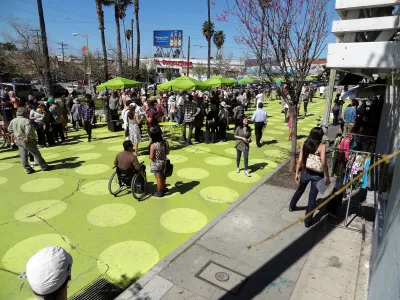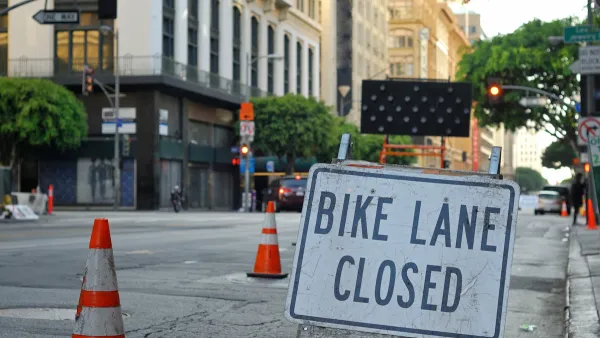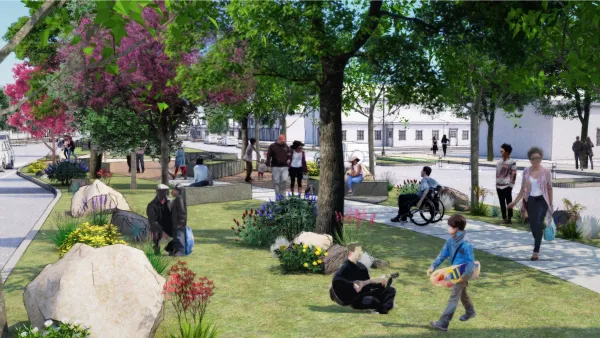The so-called car capital of the world is now a "hotbed for mobility disruption," a Harvard studio suggests.

A recent course at the Harvard Graduate School of Design explored the future of urban mobility in light of the rapid advent of automated, shared, and electric transportation technologies. The Future of Streets studio particularly focused on Los Angeles, where leaders said was innovation was bubbling in the private sector and "unprecedented investments" were being made in the public sector.
In a final studio discussion published in The Planning Report, Los Angeles city planner Claire Bowin touted the city's Mobility Plan 2035, which she said anticipated new mobility technologies by "set[ting] a policy foundation for enabling change." The plan shifted the city's car-centric transportation planning framework toward accommodating multiple users of the street space, in part by measuring traffic impacts in Vehicle Miles Traveled rather than Level of Service, she said.
Major auto companies like Nissan and Ford, eager to get ahead of the curve in new mobility markets, also participated.
Rachel Nguyen, executive director of the Renault Nissan Future Lab, said the car company's future role could be to "design and build vehicles for a future mobility system.” Nissan could also partner with cities to offer “decades of R&D on technologies to deliver zero emissions and zero fatalities,” she said. The lab recently joined the LA Cleantech Incubator's Transportation Electrification Partnership to promote EVs.
A question central to the future of urban mobility, the panelists said, was how to encourage carpooling and public transportation even as ride-hailing and autonomous vehicles become increasingly cost-competitive. "The only thing we know for certain about the future is that people will have more options," Nguyen said. "I believe that Metro stations will be the hubs of those multimodal options."
The discussion also touched on the intersection of transportation with land use. Ryan J. Westrom of Greenfield Labs, a subsidiary of Ford's Smart Mobility program, highlighted an organization started by Ford called the National Street Service "to create an advocate for the street—the largest portion of public space in the country." He also suggested that a bus system that is "appealing across the socio-demographic spectrum" is the recipe for achieving mass transit while preserving "a space that we all consider beautiful."
FULL STORY: The Future of Streets and the Value of Shared, Multimodal Transit

Analysis: Cybertruck Fatality Rate Far Exceeds That of Ford Pinto
The Tesla Cybertruck was recalled seven times last year.

National Parks Layoffs Will Cause Communities to Lose Billions
Thousands of essential park workers were laid off this week, just before the busy spring break season.

Retro-silient?: America’s First “Eco-burb,” The Woodlands Turns 50
A master-planned community north of Houston offers lessons on green infrastructure and resilient design, but falls short of its founder’s lofty affordability and walkability goals.

Test News Post 1
This is a summary

Analysis: Cybertruck Fatality Rate Far Exceeds That of Ford Pinto
The Tesla Cybertruck was recalled seven times last year.

Test News Headline 46
Test for the image on the front page.
Urban Design for Planners 1: Software Tools
This six-course series explores essential urban design concepts using open source software and equips planners with the tools they need to participate fully in the urban design process.
Planning for Universal Design
Learn the tools for implementing Universal Design in planning regulations.
EMC Planning Group, Inc.
Planetizen
Planetizen
Mpact (formerly Rail~Volution)
Great Falls Development Authority, Inc.
HUDs Office of Policy Development and Research
NYU Wagner Graduate School of Public Service




























